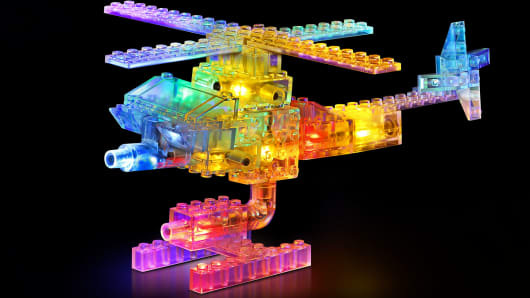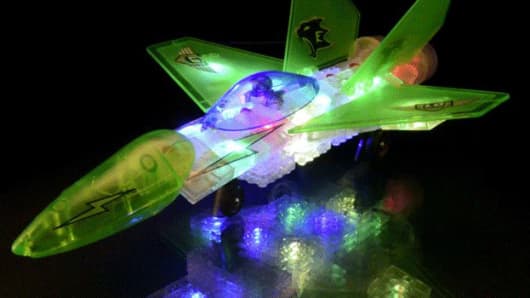"[Rosen] approached me at a toy fair," said Capriola, referring to the American International Toy Fair held at New York's Javits Center in February 2011. "He took me out to dinner and acted as if he was going to invest in me. I was excited," Capriola said. He now alleges Rosen had no intention of investing, but of rather taking the idea as his own.
Rosen declined repeated requests for an interview.
Rosen's Lite Brix patent, which was obtained in 2012, is known as a "fast-track" patent. This documentation differs from Capriola's due to the nature of the protection it provides, the cost and the length of time it takes to obtain.
(Read More: High Court's Ruling on DNA Could Boost Biotech)
Gene Quinn, a patent attorney and founder of IPWatchdog.com, told CNBC.com, a "fast-track" patent is an option for people who have a few extra thousand dollars to spend and who desire to obtain a patent at a faster pace.
"Normally what would take about four to five years or more to get a patent issued can now take five or six months for approximately $5,000 extra, depending on the size of the company," Quinn said. "However, the fast-track patent is a much broader claim and does not provide as much protection over the original idea."
With his fast-track patent in hand and knowledge of the industry, Rosen was able to begin distributing his product via retail giants such as Toys 'R Us and Wal-Mart.
While the Laser Pegs and Lite Brix products have some similarities, their prices and types of toys you can build differ. Laser Pegs products can be found in Target and other small toy stores with price tags ranging from $19.99 to $69.99. The line boasts bugs, automobiles, mythological creatures and football players. The retail price of Lite Brix runs a little higher—averaging from $21.99 to $99.99—and its designs include motorcycles, buildings and aliens.
Patent infringement litigation seems to be a bit of a catch-22. While a legal battle is economically draining for both parties, the start-up's growth can become paralyzed, according to Quinn. The option of a preliminary injunction is often unfeasible for the plaintiff due to its hefty price tag, and that can allow a larger company to rake in profits while the long legal proceedings drag on, he said.
And the outcome is far from certain. Even if Laser Pegs were to emerge victorous, New York University law professor Jeanne Fromer noted, "the winner may be entitled to damages, attorney fees and an injunction inhibiting the further production of the product, yet the bulk of the profits made by the LaRose Industry would be retained."
(Read More: 10 Ideas That Made $100 Million)
Sean McGowan, Needham & Co.'s leisure and lifestyle senior analyst, offers this advice to the newbies of the toy industry: "Love your idea and be passionate about it, but be realistic. Sometimes the best option is to sell your idea or partner with a larger, more economically sound and trusted company."
Despite the loopholes, the importance of obtaining a patent as soon as possible cannot be overemphasized. Intellectual property and patents are often used as collateral in attempts to gain investor support. Also, the third installation of the America Invents Act, implemented in March, changed the rules of the game from "first to invent" to "first to file." This change grants the right of a patent to the person who filed for the patent first, regardless of the date of actual invention.
Choosing to look on the bright side, Capriola said he is putting his fate in a judge's hands and he believes a rightful decision will be reached.
More importantly, Capriola has not let the legal dispute stymie the company's growth. He said he has seen his garage-originated company grow rapidly before his eyes and he has plans to release products with National Football League and Major League Baseball licenses as well as other company-partnered products in the near future.
—By Ashley Lagzial, CNBC.com.



